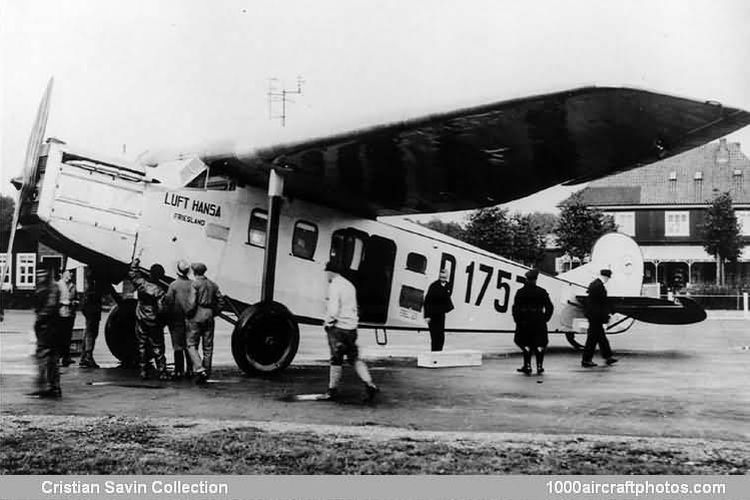06/30/2010. Remarks by Johan Visschedijk: "The Focke-Wulf Möwe (Gull) series of short-range transports were produced in limited numbers in Germany during the late 1920s and early 1930s. The first to appear was the A 17, powered by a Gnome & Rhône license-built 420 hp Bristol Jupiter 9Ab radial engine, and registered D-1149, the prototype flew for the first time in 1927. The two-man crew sat side-by-side in an enclosed cockpit, with one double and six single passenger seats to the rear. Maximum payload was eight passengers and up to 441 lb (200 kg) of baggage and/or mail.
The prototype was followed by eleven production aircraft, of which ten (D-1342 Emden, D-1358 Aurich, D-1367 Leer, D-1380 Oldenburg, D-1388 Stade, D-1403 Luneburg, D-1416 Osnabruck, D-1430 Hannover, D-1444 Munster and D-1484 Bielefeld) were delivered to Deutsche Luft Hansa (DLH ) for national and international services. These had slightly larger rudders and modified landing gear; several were later redesignated A 17a after being refitted with 480 hp Siemens-built Jupiter VI engines.
The prototype, after service with Nord Deutscher Luftverkehr and Nordbayerische Verkehrsflugzeug, eventually joined the Deutsche Luft Hansa fleet and was given the name Bremen. The eleventh A 17 was used for a time by DVL; D-1444 was redesignated A 17c after being modified with an enlarged fin and a 520 hp Junkers Jumo 5 engine.
The A 29 Möwe, which appeared in 1929, had basically the same airframe and accommodation as the A 17, though the overall length was increased to 48 ft 6.7 in (14.80 m) and it was powered by a 750 hp BMW V-engine. Five were built, four of them (D-1757 Friesland, D-1775 feverland, D-1367 Westfalen and D-1922 Saarland) being delivered to Deutsche Luft Hansa in 1929-1930. The fifth was used for airline training at the DVS.
The A 38 Möwe had a somewhat more extensively redesigned fuselage and tail assembly. Overall length was increased to 50 ft 6.3 in (15.40 m), permitting the carriage of a wireless operator and two additional passengers. Rudder area was substantially increased, and a tail wheel was fitted instead of the former tail skid. The A 38 also reverted to a radial engine installation, originally the 400 hp Siemens-built Jupiter. Later, the 500 hp Siemens Sh 20 was substituted, the aircraft then being known as the A 38b.
Only four were produced, and delivered to DLH as D-2073 Buckeburg, D-2082 Hessen, D-2107 Lipper and D-2114 Thuringen. Most DLH routes on which the Mowe series was flown were those radiating from Berlin to Cologne, Konigsberg, Marienbad, Munich, Saarbrucken, and abroad to Vienna (Austria), Paris (France), and Berne (Switzerland). The A 17a was also used for cargo services between Cologne and Nuremberg, and the A 38 over part of DLH's Berlin-Oslo (Norway) route. Most A 29s and A 38s had been retired by 1933 or 1934; two A 17a's survived until 1936 before being scrapped."
